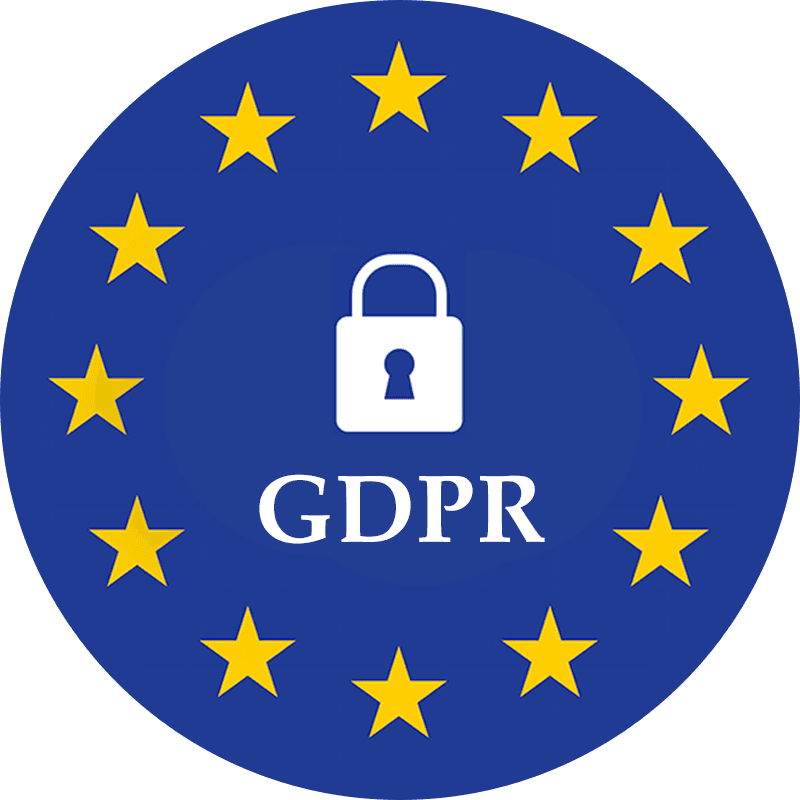All Blogs
7 Jul 2025
5 reasons why you should embed protection with your products
E-commerce in India has matured. Customers are shopping across categories, paying digitally, and getting orders delivered to remote towns in days.
E-commerce in India has matured. Customers are shopping across categories, paying digitally, and getting orders delivered to remote towns in days.
E-commerce in India has matured. Customers are shopping across categories, paying digitally, and getting orders delivered to remote towns in days.
Insuretech
5 min read
5 min read
5 min read


5 Reasons to Embed Protection Into Your Product
Protection is not new. But the way it is being offered—and the role it plays in digital products—is changing quickly.
What used to be a checkbox afterthought is now being reimagined as a core part of the customer experience. Not just insurance, but embedded protection. Relevant benefits. Timely coverage. Smart services that quietly make a product more trustworthy, more complete, and more valuable to use.
This shift is especially relevant in India, where digital-first businesses are growing fast and customer expectations are evolving just as quickly. People are not only asking what a product does. They are asking what happens after they use it. What happens if something goes wrong. What happens when the experience does not go to plan.
1. A Low-Lift Way to Improve Revenue Per User
Most businesses want to improve revenue per user. Very few want to rethink pricing, introduce new verticals, or push upgrades aggressively.
Protection offers a quieter way to grow. When customers see coverage or benefits built into higher-tier plans or bundles, they are more likely to upgrade. These might include extended warranties, repair or damage coverage, priority support, or other services that make the purchase feel safer or more complete.
You are not changing what you sell. You are improving how it is experienced. And that small shift often leads to measurable lifts in plan adoption, average spend, and long-term value.
2. Retention Comes from Ongoing Value
Retention is becoming harder. Acquisition is becoming more expensive. That means it is not enough to be useful on day one. You have to keep showing value.
Protection helps here in ways most features do not. A claim that gets resolved without friction. A benefit that saves time or effort. A service that shows up at just the right moment. These are not big moments, but they build trust, and trust compounds.
Every helpful interaction adds weight to the decision to stay. That is how protection increases retention—not through lock-in, but through small, repeated reminders that the product still has your back.
3. Protection Builds Brand Trust
Most platforms promise convenience, speed, or savings. Protection adds something different: confidence.
When a customer feels like the relationship continues after the transaction, it changes how they talk about your brand. You become less of a tool and more of a partner. Someone who did not just sell something, but stayed when things got uncertain.
That change creates loyalty. It also creates word of mouth. Customers are more likely to recommend platforms that offer not just a good product, but a sense of security around it.
4. Better Data for Product Decisions
Most data is noisy. Protection data is not.
When a customer files a claim, redeems a benefit, or engages with a support feature, they are telling you something specific. Maybe something broke. Maybe a risk felt too high. Maybe the experience almost failed.
This is high-intent feedback. Smart teams use it to refine protection offers, improve onboarding, and even fix friction points in the core product. The result is a feedback loop that is grounded in real moments—not just survey responses or passive metrics.
Protection does not just support the user. It informs the roadmap.
5. A Differentiator in a Crowded Market
In categories where products and features feel increasingly similar, protection becomes a quiet but meaningful differentiator.
When users see that your platform doesn’t just sell—it protects—they remember. And when the next purchase decision comes around, that memory shapes preference.
This is how protection shifts from being a feature to becoming a reason to choose you. Not because it screams for attention, but because it quietly proves reliability where others don’t, creating preferance through reliability and not through reliability.
P.s: Over time, customers stop comparing you to alternatives. They simply default to using you because it feels smarter, safer, and more rewarding.
Final Thought
Embedded protection is not about adding complexity. It is about increasing the completeness of your product. It brings confidence to the transaction, trust to the relationship, and longevity to the customer experience.
This might look different for each business. For some, it is device cover or service guarantees. For others, it is travel support, health assistance, or business continuity. The specifics are flexible. What matters is that the benefit makes sense in context, and that it feels like part of the product—not a layer on top.
When done right, protection makes everything work better. Not because it calls attention to itself, but because it quietly fills the gaps your customers care about most.
If you are exploring how protection might fit into your product, we are here to help you think it through.
5 Reasons to Embed Protection Into Your Product
Protection is not new. But the way it is being offered—and the role it plays in digital products—is changing quickly.
What used to be a checkbox afterthought is now being reimagined as a core part of the customer experience. Not just insurance, but embedded protection. Relevant benefits. Timely coverage. Smart services that quietly make a product more trustworthy, more complete, and more valuable to use.
This shift is especially relevant in India, where digital-first businesses are growing fast and customer expectations are evolving just as quickly. People are not only asking what a product does. They are asking what happens after they use it. What happens if something goes wrong. What happens when the experience does not go to plan.
1. A Low-Lift Way to Improve Revenue Per User
Most businesses want to improve revenue per user. Very few want to rethink pricing, introduce new verticals, or push upgrades aggressively.
Protection offers a quieter way to grow. When customers see coverage or benefits built into higher-tier plans or bundles, they are more likely to upgrade. These might include extended warranties, repair or damage coverage, priority support, or other services that make the purchase feel safer or more complete.
You are not changing what you sell. You are improving how it is experienced. And that small shift often leads to measurable lifts in plan adoption, average spend, and long-term value.
2. Retention Comes from Ongoing Value
Retention is becoming harder. Acquisition is becoming more expensive. That means it is not enough to be useful on day one. You have to keep showing value.
Protection helps here in ways most features do not. A claim that gets resolved without friction. A benefit that saves time or effort. A service that shows up at just the right moment. These are not big moments, but they build trust, and trust compounds.
Every helpful interaction adds weight to the decision to stay. That is how protection increases retention—not through lock-in, but through small, repeated reminders that the product still has your back.
3. Protection Builds Brand Trust
Most platforms promise convenience, speed, or savings. Protection adds something different: confidence.
When a customer feels like the relationship continues after the transaction, it changes how they talk about your brand. You become less of a tool and more of a partner. Someone who did not just sell something, but stayed when things got uncertain.
That change creates loyalty. It also creates word of mouth. Customers are more likely to recommend platforms that offer not just a good product, but a sense of security around it.
4. Better Data for Product Decisions
Most data is noisy. Protection data is not.
When a customer files a claim, redeems a benefit, or engages with a support feature, they are telling you something specific. Maybe something broke. Maybe a risk felt too high. Maybe the experience almost failed.
This is high-intent feedback. Smart teams use it to refine protection offers, improve onboarding, and even fix friction points in the core product. The result is a feedback loop that is grounded in real moments—not just survey responses or passive metrics.
Protection does not just support the user. It informs the roadmap.
5. A Differentiator in a Crowded Market
In categories where products and features feel increasingly similar, protection becomes a quiet but meaningful differentiator.
When users see that your platform doesn’t just sell—it protects—they remember. And when the next purchase decision comes around, that memory shapes preference.
This is how protection shifts from being a feature to becoming a reason to choose you. Not because it screams for attention, but because it quietly proves reliability where others don’t, creating preferance through reliability and not through reliability.
P.s: Over time, customers stop comparing you to alternatives. They simply default to using you because it feels smarter, safer, and more rewarding.
Final Thought
Embedded protection is not about adding complexity. It is about increasing the completeness of your product. It brings confidence to the transaction, trust to the relationship, and longevity to the customer experience.
This might look different for each business. For some, it is device cover or service guarantees. For others, it is travel support, health assistance, or business continuity. The specifics are flexible. What matters is that the benefit makes sense in context, and that it feels like part of the product—not a layer on top.
When done right, protection makes everything work better. Not because it calls attention to itself, but because it quietly fills the gaps your customers care about most.
If you are exploring how protection might fit into your product, we are here to help you think it through.

Ready to level up?

Ready to level up?

Ready to level up?

Assurekit is a full-stack digital insurance platform built for growth, that enables anyone to create, sell and manage contextual insurance products in a plug-and-play manner



©2024 Assurekit technology & service pvt ltd

Assurekit is a full-stack digital insurance platform built for growth, that enables anyone to create, sell and manage contextual insurance products in a plug-and-play manner



©2024 Assurekit technology & service pvt ltd

Assurekit is a full-stack digital insurance platform built for growth, that enables anyone to create, sell and manage contextual insurance products in a plug-and-play manner



©2024 Assurekit technology & service pvt ltd